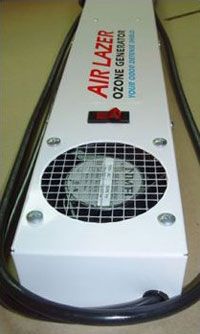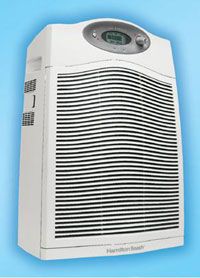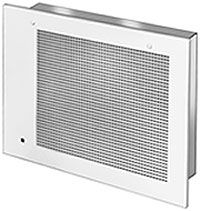Types of Air Purifiers
Filters
Some air purifiers clean the air by passing it through a filter that removes particles. These are sometimes called air cleaners. In households, these filters are usually part of the heating or cooling system. A filter housing is installed between the air return duct and the furnace. The filter cartridge slides into this housing, so all air flowing into the furnace is filtered. Not only does this remove contaminants from the air, it prevents damage to the furnace due to dust and dirt build-up. Filters can also be placed into the air return vents in each room of a house. Typical materials include foam, cotton, fiberglass or synthetic fibers. In part, the density of the filter material limits the size of the particles that pass through -- very dense filters have smaller gaps, allowing it to catch very small particles. Pleated filters work best because of the increased surface area for catching particles. However, filters are capable of catching particles even smaller than the smallest gaps in the filter material. Air filters can be expensive, and you have to replace them to keep them functioning properly (some filters are washable). They also restrict air flow through the system, causing a drop in overall efficiency.
HEPA (High Efficiency Particulate Air) filters meet a Department of Energy standard for removing particles from the air. The filter can consist of any material as long as it meets this standard -- penetration of less than 0.03 percent of particles 0.3 micrometers in size or larger [source]. The filter must also allow a specific amount of air to flow through, which varies by the size of the filter. The ULPA (Ultra-Low Penetration Air) standard is even stricter. In addition to their familiar household uses cleaning air of allergens and dust particles, advanced HEPA filters are used by the nuclear power industry.
Advertisement

Ionizing Purifiers
These air purifiers use a method called corona discharge to create charged molecules called ions. Most atoms in the air have a neutral charge -- they have the same number of negatively-charged electrons as positively-charged protons. The corona discharge is a small but intense electrical field. Molecules passing through it will pick up an additional electron, giving the molecule a negative charge, or it may have an electron knocked off of it, giving it a positive charge. Larger particles in the air, such as dust or other contaminants, are more likely to be ionized because they make larger targets for the electrons as they pass through the corona discharge.
Once a particle is charged, it will be attracted to anything with the opposite charge. Two metal plates within the purifier are charged (one negative, one positive) to attract these particles. Also, particles in the air will be drawn to each other if they have opposite charges. As the particles clump together, they get heavier and eventually they settle out of the air.
Ozone Generators
An ozone generator works much like an ionizing purifier, but it is designed to alter molecules of oxygen and turn them into ozone, a molecule made up of three oxygen atoms. Oxygen in the atmosphere exists as dioxygen, a molecule made up of two oxygen atoms. When these molecules are exposed to a corona discharge or UV light, some of the dioxygen molecules split into separate oxygen atoms (free oxygen). While most of this oxygen recombines into dioxygen, some of the atoms form ozone.

Manufacturers of these devices claim that the ozone deodorizes and disinfects the air. Many also claim other health benefits from the presence of ozone. However, there is strong evidence that ozone does not accomplish air purification. Ozone is also known to be a toxic gas. It is not a very stable molecule -- it reacts readily with other chemicals that may be in the air, forming new compounds that can be more dangerous than the ozone itself. Ozone also oxidizes metals and causes corrosion. The same process that creates ozone also creates nitrogen oxides, leading to further reactions with compounds present in the air and with ozone itself.
Adsorbents
Many purifiers incorporate an adsorbent material to take care of odors, fumes and chemicals in the air. Adsorption (not absorption) is the process of one substance being trapped on the surface of another substance. The most common adsorbent is activated charcoal, which is extremely porous and has many microscopic "nooks and crannies" to trap passing molecules. Larger particles are simply stuck in the many pores in the charcoal. Electrostatic attraction draws some substances into the pores. Certain substances react chemically with the charcoal and bond to it. The high surface area of the charcoal gives it lots of bonding places. The process used to make the charcoal can affect which compounds it is better at adsorbing.
UV Light
Ultraviolet radiation renders certain micro-organisms sterile (and harmless). Some air purifiers feature a UV light that bathes the air as it passes through, eliminating the potential harm of airborne bacteria and viruses.
